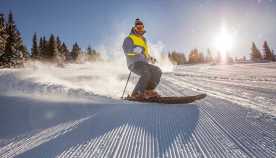AARP Eye Center
- right_container
- Health
- Money
- Work & Jobs
- Social Security
- Medicare
- Caregiving
- Games
- Travel
- More...
- Entertainment & Style
- Family & Relationships
- Personal Tech
- Home & Living
- Auto
- Staying Sharp
- Podcasts
- Videos
Allyn's Red Barn
History
Welcome to our farm and orchards. We hope your visit will be both enjoyable and informative. This farm has been in my family for over 230 years, being owned by four generations of the Billings family until my great-great grandmother, Margaret Allyn Billings, transferred it to my grandfather William I. Allyn after he married my grandmother - Mrs. Billings' granddaughter. Most of the former owners are buried in the cemetery adjoining the farm.
The land has remained mostly unchanged but the house was remodeled in the 1800's and again in early 1900 with only one room left of the original building. A room added in the early 1900's provided office space for the Town Clerk, Selectmen and other officials and housed all the town records for some 30 years. My grandfather served as both Town Clerk and Treasurer from 1899 to his death in 1949. The oak tree in front of the house is Ledyard's Constitutional Oak, given to my grandfather as a seedling at the Constitutional Convention of 1902.
The farm consists of approximately 200 acres on both sides of the highway, about 16 acres in orchards, and the rest is made up of hay fields, pasture and woods. The road which passes the house (formerly referred to as Quakertown Road) was the main highway from Groton to Norwich now known as Colonel Ledyard Highway. Prior to 1900, sheep, cattle and horses were kept; potatoes, turnips and other produce were grown primarily for the family's use as the main vocations were carpentry, teaching, bookselling or fishing.
Upon purchasing the farm, my grandfather started orchards of peaches and apples. After they began to produce fruit, peaches were picked during the day, graded afternoons and evenings, loaded on wagons and transported by horses to the New London produce market to be wholesaled in the early morning. Peach trees, being short-lived, were eventually replaced by apples. Although many varieties were grown, the predominant ones were McIntosh and Baldwins on standard root stocks, full size trees. Some of these trees still remain though many have fallen victim to hurricanes, ice storms, harsh winters or mice, which eat the bark from the trunks or roots killing the trees. Our orchards still contain over 20 varieties of apples. In addition to the fruit, a dairy herd was built up and with it a retail milk route in Mystic and the adjoining area - about 500 quarts daily. Unable to produce all the milk needed, extra milk was purchased from nearby farms and processed here as raw milk. Several persons were employed to handle various chores. Taking house guests and serving dinners came to be part of the operations. The bungalow in the orchard used to be a cottage for summer guests.
After the passing of both parents, my father made the decision to dispose of the herd and concentrate on fruit. His aim was to update the machinery used and remove rocks and obstructions in the orchards to better utilize the machines and labor. Special sprayers were used to eliminate poison ivy, a problem for pickers. Tree size and varieties are always to be considered as are spray materials to control the various insects and diseases. Spraying equipment has changed drastically through the years. We still have the spray pump used 80 years ago mounted in a 50 gallon wooden barrel and carried in a one horse wagon. One man operated the hand pump and drove the horse, the other walked around each tree carrying a bamboo pole spray gun to which was attached a long hose. Today we use a 100 gallon capacity sprayer powered by a large tractor, enabling one person to spray two rows at a time.
As a commercial orchard ours is a very small operation. Farm businesses today must either be large to utilize several persons or small enough to employ little labor. I prefer the later. Ours is primarily a one person operation, although during harvest time we have a few part time employees. Most of our pick-your-own takes place in the orchard behind the farm house. It included such varieties as Red & Golden Delicious, McIntosh, Ida Red, Macoun, Cortland and Spartan. Many of these trees were planted following the 1938 hurricane which uprooted some 175 trees and left the ground covered in immature apples. You can see where some trees have been removed after being damaged by mice or storms. Many of the trees in our orchard are semi-dwarf trees as opposed to full size root stock. The variation in size is due largely to damage from a grass fire about 40 years ago. A few trees were untouched, some were damaged and many were killed. Some roots survived and have since been grafted, still others replaced.
The many outbuildings on the land have served various purposes over the years. The "Red Barn" was originally the horse barn and carriage shed but was remodeled, insulated and refrigerated. A work room and sales room were added in 1965. Our storage operates seasonally at temperatures just above freezing and keeps our apples fresh and crisp. The white barn behind the store on the left is the cow barn. Although we haven't been a milk farm for many years, I still keep about a dozen cows on the land. They move up to the pasture by the high school for the winter months. The building that is painted yellow to match the house is our cider mill. The shed after the cider mill used to be an ice house and later a school bus was stored there. Beyond the ice house is the equipment barn, where if you peek in the windows, you can see a 1940 Oldsmobile and other old tractors and equipment. If you look closely along the left side, you can see a 1947 Chevy platform truck mostly hidden by a tree that has grown through the bed. Thank you for visiting our orchards! Please come again!
AARP Events for Ledyard
-
Featured Event
The Fight For Women’s Suffrage in Connecticut
Wednesday, Mar 26, 2025 at 1:00 p.m. ET
Zoom
Online Event
-
Featured Event
UConn Basketball in the Jim Calhoun Era
Wednesday, Apr 2, 2025 at 7:00 p.m. ET
Zoom
Online Event
-
Featured Event
Baseball and American Society
Wednesday, Apr 9, 2025 at 1:00 p.m. ET
Online Event

New Pricing Coming in 2025.
This is AARP's first rate increase in 15 years.
Don't miss out, join today and save!































.jpg?crop=true&anchor=13,195&q=80&color=ffffffff&u=lywnjt&w=2008&h=1154)




























